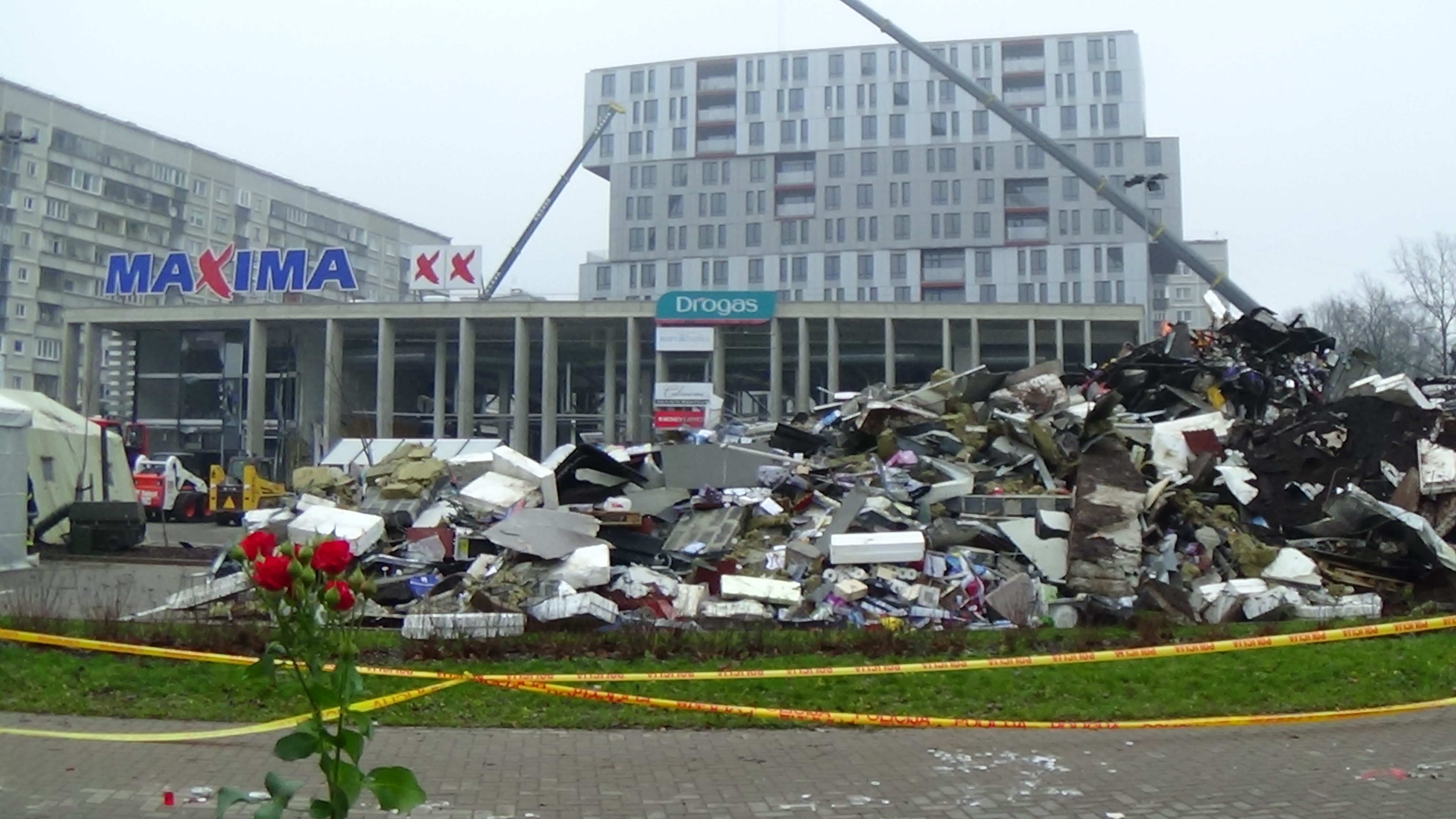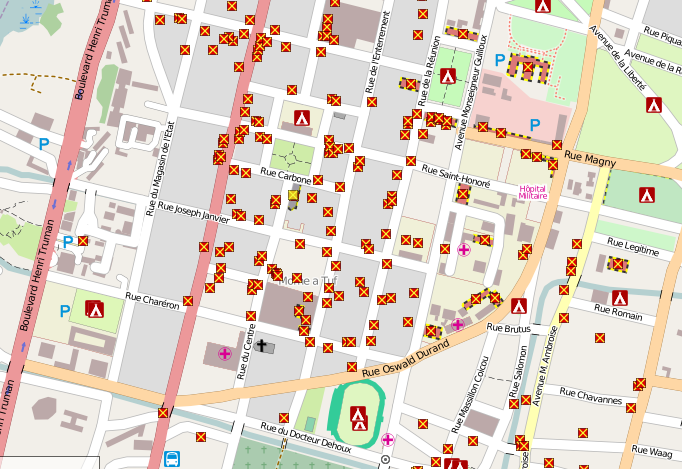 |
| The collapsed Maxima XX Supermarket in Riga Source: Valenciano via Wikimedia Commons. CC-BY_SA |
There are a number of other recent instances where the badly damaged buidlings' changed circumstances have been mapped very promptly on OpenStreetMap. Notable example are: The Clutha Vaults, hit by a helicopter in Glasgow and the collapse of the roof of the Maxima XX supermarket in Riga.
The normal changes are to either remove any amenity tags (usually by pre-pending them with old_, which facilitates finding the location), mark the surrounding area with landuse=demolition, or landuse=construction, and to change any building=* to building=collapsed. The process now occurs as swiftly as the creation of the associated article on Wikipedia: naturally there is substantial synergy between the two processes.
However, the building=collapsed tag did not evolve in order to better illustrate news events.
 |
| Presidential Palace, Port-au-Prince after 2010 earthquake. Source: Wikimedia Commons CC-BY-SA. |
 | |
| Central Port-au-Prince showing collapsed and damaged buildings, 17 January 2010 The Presidential Palace is top right. Source: Haiti Earthquake Damage Map |
However, over time, OpenStreetMap's capabilities and credibility have increased. One factor is that after a major disaster OSM can deploy a significant number of mappers who already have experience of interpreting aerial imagery after catastrophes. Another, as in the Philippines recently, first responders, such as the Red Cross, are seeking to use OSM directly.
Most of these entities have been mapped very recently as part of the concerted effort to provide high quality maps for humanitarian relief efforts for Typhoon (Yolanda) in the Philippines.
 |
| Collapsing house, Babbacombe © Copyright Derek Harper and licensed for reuse under this Creative Commons Licence. |
For me these are the significant points:
- Simplicity prevailed over exactitude in the tagging. We still don't cleanly separate building type and status. This is not just because the simple tag is much easier to remember and apply: reusing an existing tag often means that downstream data consumers require little change to meet the particular humanitarian situation. An additional tag for building status would have required a whole host of changes to allow simple maps to be rendered. Using building=collapsed meant that one rule needed to be added and maps (see image above) were being produced within hours of the tag going into use.
- Tags for major disasters often reflect things which happen anyway, but which in the normal course of things are unusual. Buildings collapse from time to time: from storm damage, after fires, from structural defects and so on. It's just that for those of us living in North America and Europe these are relatively rare events.
The advantage of a worldwide database is that, however rare certain events are locally, they will be happening somewhere and if there is a mapper there they will want to know how to tag it. Although in this case the tag was created by armchair mappers. I'm sure that there are plenty of tags already in use for particular situations somewhere in the world which would fix tagging problems in my local patch.
- Tags persist. Once a tag enters widespread usage it is very hard to kill. The OSM wiki is full of deprecated tags, XXX 2.0 schemas etc. However well-intentioned these ideas just don't match how tagging works in practice. Despite 3 years of advocacy of detailed tagging guidelines for public transport we still have plenty of highway=bus_stop tags. (More on this type of problem anon).
Another question is how do I tag the Westgate Mall in Nairobi, Kenya? http://www.openstreetmap.org/edit#map=19/-1.25699/36.80315
ReplyDelete